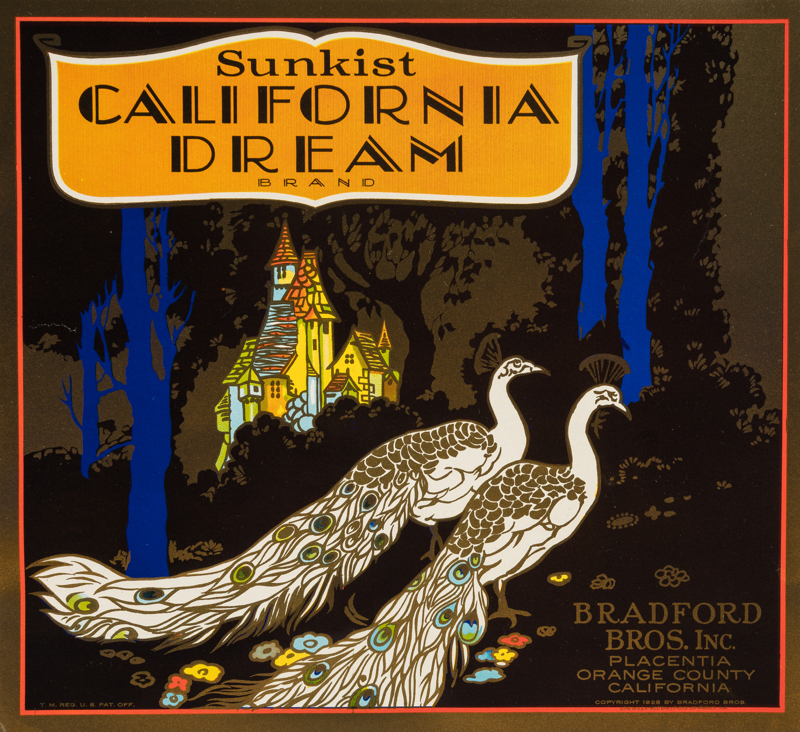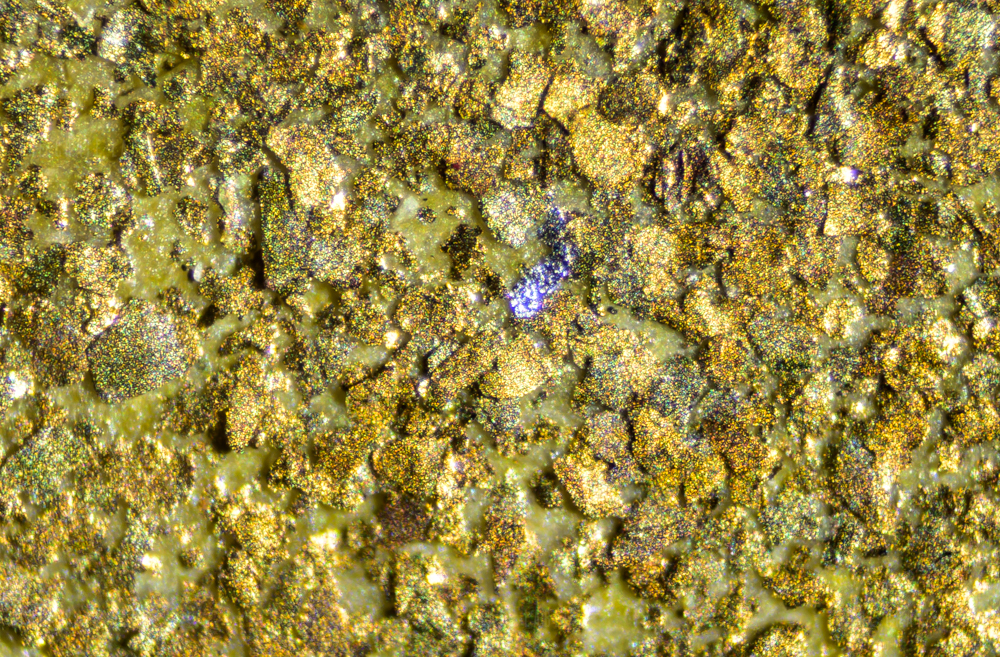One common question that arises frequently regards how to tell a reproduction crate label from an original crate label. To clarify and be fully honest, a truly sophisticated reproduction could be quite difficult to detect. Thankfully, such masterful reproductions are quite rare since the techniques and supplies needed are exceptionally difficult to come by. However, the majority of cases will have common “tells” that give away a reproduction.
With today’s tip, we will focus on a specific detail of a particular original crate labels that would be nearly impossible to reproduce perfectly. And, more importantly, how to detect it.
Tip #1: Reflective Gold Metallic Flakes
There are a variety of labels that have a specific metallic flake infused onto the surface of the label. One of the most obvious case is the California Dream label.

In this case, we examine any of the gold metallic section of the label. Specifically, a unique property of this label is that the shiny metallic flakes on the surface of the gold area reflect and shimmer in light. Now, consequently you are perhaps inclined to say that there are metallic inks/paints that can replicate this in a reproduction. Indeed, there are inks/paints that can partly replicate this appearance in a reproduction . But, it will not look exactly the same; especially upon very close inspection.
Under a Microscope
Indeed, in order to truly see the difference, a microscope is needed. That is, with approximately 50x to 100x, actual metal dust particles embedded into the resin become apparent. Subsequently, the resin is in turn adhered to the surface of the label. This resin is what makes this case fairly unique and different from a reproduction.

The Resin Tells the Tail
Now, notice in the image above the resin that binds the metallic flakes together. Certainly, this property is a primary trait that we are looking for in our analysis of such labels. A reproduction would not contain such properties. If it did, it would be an exceptional case. Specifically because the use of such resin in the creation of these labels was unique to the time. Further, the process of creating this label (which we will perhaps examine another time) was particularly dangerous in execution. Consequently, the process discontinued over time. In turn, this unique property demonstrates its age and uniqueness to the time of pre-1955 when this technique was used.